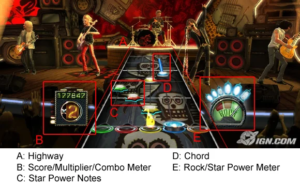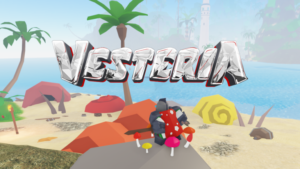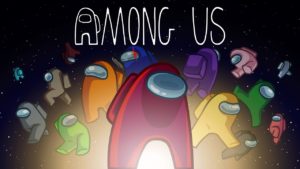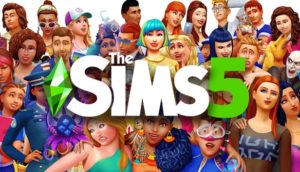
How Games Create Deep Flow
Imagine a classroom where students are so engrossed in their learning activities that they lose track of time, forget about their worries, and feel a sense of joy and accomplishment. This is not a fantasy, but a possible reality when students experience the flow state.
The flow state, also known as being “in the zone”, is a psychological phenomenon that occurs when people are fully immersed in a challenging but enjoyable task that matches their skills and abilities.
Flow is a psychological state of optimal experience, where one is fully immersed and engaged in an activity. It is often associated with positive emotions, high performance, and intrinsic motivation. Flow has been studied in various contexts, including games. We’ve found that games can help us enter a flow state, and we can even measure the flow that is happening during activities.
According to Csikszentmihalyi, the pioneer of flow research, there are nine dimensions that characterize the flow experience. Here is a brief explanation of each dimension and some examples of how they are used in games and gamified learning experiences:
Challenge-skill balance: This dimension refers to the optimal match between the perceived level of challenge and the perceived level of skill. When the challenge is too high or too low compared to the skill, one may feel anxious or bored, respectively. When the challenge and skill are balanced, one may feel engaged and motivated. Games often use adaptive difficulty, level design, and feedback mechanisms to create a challenge-skill balance for different players.
Guitar Hero is a game that supports the challenge-skill balance dimension of flow by providing different difficulty modes, feedback mechanisms, and rewards that adapt to the player’s skill level and performance. Guitar Hero is a game that allows the player to play various songs using a guitar-shaped controller. The game supports the challenge-skill balance dimension of flow through:
- Difficulty modes: The game allows the player to choose from four difficulty modes (Easy, Medium, Hard, and Expert) that affect the number and speed of notes the player has to hit on the controller. The game also allows the player to change the difficulty mode at any time during the game. The game provides different levels of challenge that match the player’s skill level and preferences.
- Feedback mechanisms: The game provides feedback mechanisms that show the player’s performance and progress during and after each song. The game uses a rock meter, a score multiplier, and a star power meter that indicate how well the player is playing and how close they are to failing or succeeding. The game also uses sounds, visuals, and animations that indicate the results and consequences of each action.
- Rewards: The game rewards the player with points, stars, in-game money, and unlockable songs and features that motivate the player to improve their score and progress. The game also rewards the player with applause, cheers, or boos from the audience that reflect the player’s performance.
By providing these elements, Guitar Hero creates a challenge-skill balance for different players that can enhance their flow experience. The game allows the player to select a difficulty mode that matches their skill level and provides them with a clear goal and a manageable challenge. The game also provides immediate feedback and rewards that inform the player about their results and consequences of their actions. The game also encourages the player to increase their skill level and challenge themselves by offering more songs, features, and modes that require more accuracy and speed.
Clear goals: This dimension refers to the clarity and specificity of the goals or objectives of the activity. Having clear goals helps one to focus on the task and to monitor progress. Games often provide clear goals through quests, missions, objectives, or achievements that guide the player’s actions and expectations.
Vesteria is a fantasy MMORPG that offers a variety of quests, classes, skills, items, and enemies for players to explore and enjoy 2. The game supports the clear goals dimension of flow by providing players with:
- Quests: Quests are small tasks or objectives that players can receive from NPCs or events. They usually involve killing certain enemies, collecting certain items, or delivering something to someone. Quests give players a clear direction and purpose for their actions, as well as rewards such as experience points, items, or currency.
- Classes: Classes are the main roles that players can choose for their characters. They determine the skills, stats, weapons, and armor that players can use. Classes give players a clear identity and specialization for their gameplay style, as well as a sense of progression and achievement as they level up and unlock new abilities.
- Skills: Skills are the special abilities that players can use in combat or exploration. They consume mana or stamina and have cooldowns. Skills give players a clear advantage and strategy for dealing with different situations and enemies, as well as a way to customize their characters according to their preferences.
- Items: Items are the various objects that players can obtain, use, equip, or sell in the game. They include weapons, armor, boots, consumables, runes, scrolls, potions, and more. Items give players a clear incentive and reward for their efforts, as well as a way to enhance their characters’ performance and appearance.
- Enemies: Enemies are the hostile creatures that players can encounter and fight in the game. They have different levels, stats, behaviors, and drops. Enemies give players a clear challenge and threat for their survival, as well as a way to test their skills and gain experience.
These elements create a sense of direction, purpose, identity, strategy, reward, and challenge for the players, which can enhance their immersion and engagement in the game. Vesteria is an example of how game design can facilitate flow experiences for players who enjoy fantasy roleplaying games.
Control: This dimension refers to the sense of agency and autonomy over the activity. Having control means that one can influence the outcome of the activity and make choices that matter. Games often provide control through interactivity, branching narratives, customization, or player-generated content that allow the player to shape their own experience.
A game that provides control for learners is SimCityEDU, which is a an adaptation of SimCity designed by GlassLab specifically for schools and classrooms that allows learners to create and manage their own city while learning about environmental issues.
The game provides control through:
- Interactivity: The game allows the player to interact with various aspects of their city, such as buildings, roads, utilities, citizens, and policies. The game also allows the player to use various tools, such as graphs, maps, and dashboards, to monitor and analyze their city’s performance and impact.
- Branching narratives: The game offers different scenarios and missions that involve different challenges and goals related to environmental issues, such as air pollution, water consumption, or energy efficiency. The game also allows the player to choose different paths and strategies to solve these problems and see the consequences of their actions.
- Customization: The game allows the player to customize their city according to their preferences and creativity. The game also allows the player to modify various parameters and settings that affect the difficulty and complexity of the game.
- Player-generated content: The game allows the player to create their own scenarios and missions using a built-in editor. The game also allows the player to share their creations with other players and play their creations.
The game also provides feedback, data, and assessments to help learners understand the impact of their decisions.
(Immediate) feedback: This dimension refers to the timely and relevant information that informs one about the results of their actions. Feedback helps one to adjust their performance and to learn from their mistakes. Games often provide feedback through sounds, visuals, scores, rewards, or punishments that indicate the consequences of the player’s actions.
Among Us is a casual and humorous multiplayer game that involves playing as a crewmate or an impostor in a spaceship or a base. The crewmates have to complete tasks and find the impostors, while the impostors have to eliminate the crewmates and sabotage the mission. The game provides immediate feedback by showing the player their role and objective, as well as indicators on how to achieve it. The game also features chat, voting, and animations to enhance the social and emotional aspects of the game.
Some examples of how Among Us provides immediate feedback are:
- Role and objective: At the start of each round, the game randomly assigns each player a role of either crewmate or impostor. The game also shows each player their objective for the round, such as completing tasks, finding impostors, eliminating crewmates, or sabotaging the mission. The game gives clear and concise information on what each player has to do and why.
- Tasks: The crewmates have to complete various tasks around the map, such as wiring, scanning, or fueling. The game shows each player their task list and their progress on completing them. The game also gives visual and auditory feedback on whether the player has successfully completed a task or not, such as a green check mark, a sound effect, or an animation.
- Sabotages: The impostors have to sabotage the mission by causing malfunctions or crises, such as turning off the lights, locking doors, or triggering a reactor meltdown. The game shows each player when a sabotage has occurred and how to fix it. The game also gives feedback on whether the sabotage has been resolved or not, such as a countdown timer, a sound effect, or an animation.
- Bodies: The crewmates have to report any bodies they find by pressing a report button. The game shows each player when they can report a body by displaying a report button and an exclamation mark. The game also gives feedback on whether the body was reported or not, such as a siren sound, an animation, or a message.
- Meetings: The players have to discuss and vote for who they think is the impostor during meetings. The game shows each player when they can call a meeting by displaying an emergency button or a meeting button. The game also gives feedback on who called the meeting, who voted for whom, and who was ejected or not, such as chat messages, voting results, or animations.
Among Us is a game that supports the immediate feedback dimension of flow by providing players with clear and timely information about their role, objective, and actions. The game also enhances the social and emotional aspects of the game by featuring chat, voting, and animations. Among Us is an example of how game design can facilitate flow experiences for players who enjoy multiplayer games.
Autotelic experience: This dimension refers to the intrinsic motivation and enjoyment of the activity for its own sake. Having an autotelic experience means that one does not need external rewards or pressures to engage in the activity, but rather finds it inherently satisfying and rewarding. Games often provide an autotelic experience through fun, aesthetics, challenge, or curiosity that appeal to the player’s intrinsic interests and preferences.
A game that provides an autotelic experience is Journey, which is an adventure game that involves exploring a vast desert and reaching a distant mountain. The game does not have any dialogue, text, or explicit goals, but rather relies on the player’s curiosity and emotions to create a meaningful and enjoyable experience.
The game provides an autotelic experience through:
- Fun: The game allows the player to have fun by interacting with the environment, such as sliding on sand, flying with cloth, or singing with glyphs. The game also allows the player to have fun by interacting with other players, such as helping, following, or communicating with them.
- Aesthetics: The game offers aesthetics by creating a beautiful and immersive world, such as colorful landscapes, dynamic weather, and atmospheric music. The game also offers aesthetics by creating a mysterious and emotional story, such as discovering ancient ruins, encountering mystical creatures, and facing dangers and hardships.
- Challenge: The game provides challenge by creating a sense of curiosity and discovery, such as exploring unknown areas, finding hidden secrets, or unlocking new abilities. The game also provides challenge by creating a sense of urgency and danger, such as escaping from enemies, surviving harsh conditions, or overcoming obstacles.
- Curiosity: The game stimulates curiosity by creating a sense of wonder and awe, such as witnessing spectacular sights, experiencing magical moments, or reaching the final destination. The game also stimulates curiosity by creating a sense of mystery and ambiguity, such as leaving clues, symbols, and hints that invite the player to interpret and imagine their own meaning.
By providing these elements, Journey creates a sense of autotelic experience for the player that can enhance their flow experience. The game allows the player to enjoy the activity for its own sake and not for any external rewards or pressures. The game also provides meaningful experiences that reflect the player’s values and goals. The game also encourages the player to express their creativity and identity through their actions and choices.
Loss of self-consciousness: This dimension refers to the reduced awareness of oneself and one’s surroundings. Losing self-consciousness means that one is not distracted by irrelevant thoughts or worries, but rather fully immersed in the activity. Games often induce a loss of self-consciousness through immersion, presence, or identification that create a sense of being in another world or role.
A game that induces a loss of self-consciousness for learners is Assassin’s Creed: Discovery Tour, which takes the popular video game series Assassin’s Creed and turns it into an educational experience where the player explores historical settings and learns about different cultures. The game also uses realistic graphics, sound, and narration to create a sense of immersion and presence.
The game supports the loss of self-consciousness dimension of flow through:
- Immersion: The game creates immersion by creating a realistic and detailed world, such as ancient Greece, Egypt, or Rome, that the player can explore freely and interact with. The game also creates immersion by using realistic graphics, sound, and animation that make the player feel like they are in another time and place.
- Presence: The game creates presence by allowing the player to choose from different characters and perspectives, such as a warrior, a scholar, or a tourist, that suit their preferences and goals. The game also creates presence by using a first-person or a third-person view that make the player feel like they are part of the world and the story.
- Identification: The game creates identification by allowing the player to learn about different cultures and histories, such as myths, legends, art, or politics, that interest them and resonate with them. The game also creates identification by using narration, dialogue, and interaction that make the player feel like they are connected to the world and the people.
By providing these elements, Assassin’s Creed Odyssey Discovery Tour creates a sense of loss of self-consciousness for the player that can enhance their flow experience. The game allows the player to forget about themselves and their surroundings and become fully absorbed in the activity. The game also provides meaningful experiences that reflect the player’s values and goals. The game also encourages the player to express their creativity and identity through their exploration and learning.
Time transformation: This dimension refers to the altered perception of time during the activity. Time transformation means that one may lose track of time or feel that time passes faster or slower than usual. Games often cause time transformation through pacing, flow triggers, or suspense that manipulate the player’s attention and arousal.
The Sims is a life simulation game that allows players to create and control virtual characters and their lives. The game uses a variable time scale that changes depending on the actions of the player and the events in the game. I used to work on The Sims development team back in the day and can assure you that this game is very engaging and cause the player to lose track of time!
The game supports the time transformation dimension of flow through:
- Pacing: The game allows the player to adjust the speed of the game according to their preferences and goals. The game has four speed modes (Normal, Fast, Ultra Speed, and Pause) that affect how fast or slow the time passes in the game. The player can also use a clock and a calendar to keep track of the time and date in the game.
- Flow triggers: The game uses flow triggers, which are events or stimuli that capture the player’s attention and increase their arousal. The game has various flow triggers, such as needs, wishes, opportunities, or emergencies, that require the player to respond quickly and effectively. The game also has various flow triggers, such as relationships, careers, hobbies, or achievements, that require the player to plan ahead and strategize.
- Suspense: The game creates suspense by creating a sense of uncertainty and anticipation for the player. The game has various elements that create suspense, such as random events, surprises, twists, or outcomes, that can affect the player’s characters and their lives. The game also has various elements that create suspense, such as goals, challenges, risks, or rewards, that can motivate the player to achieve their desired outcome.
By providing these elements, The Sims creates a sense of time transformation for the player that can enhance their flow experience. The game allows the player to experience different perceptions of time depending on their actions and choices. The game also provides meaningful experiences that reflect the player’s values and goals. The game also encourages the player to express their creativity and identity through their characters and their lives.
Concentration: This dimension refers to the intense focus and attention on the activity. Concentration means that one is not easily distracted by external or internal stimuli, but rather fully absorbed in the activity. Games often foster concentration through challenge, complexity, or novelty that require the player’s cognitive and emotional engagement.
Mario Kart 8 Deluxe is a game that involves racing and driving with various characters and vehicles. The game supports the concentration dimension of flow through:
- Challenge: The game provides challenge by creating a sense of curiosity and discovery, such as exploring different tracks, collecting coins, or unlocking items. The game also provides challenge by creating a sense of urgency and danger, such as avoiding obstacles, using items, or competing with others.
- Feedback: The game provides feedback by showing the player’s performance and progress through speed, position, lap, and time. The game also provides feedback by using sounds, visuals, and animations that indicate the results and consequences of each action.
- Adaptive difficulty: The game uses adaptive difficulty by offering different modes and options that suit the player’s preferences and goals. The game also uses adaptive difficulty by adjusting the speed and behavior of the opponents according to the player’s skill and performance.
By providing these elements, Mario Kart 8 Deluxe creates a sense of concentration for the player that can enhance their flow experience. The game requires the player’s full attention and reflexes to complete the race and achieve their desired outcome. The game also provides meaningful experiences that reflect the player’s values and goals. The game also encourages the player to improve their performance and have fun with their friends.
Merging action-awareness: This dimension refers to the harmony and integration between one’s actions and awareness. Merging action-awareness means that one does not need to think consciously about what to do next, but rather acts intuitively and spontaneously. Games often facilitate merging action-awareness through skill mastery, flow zones, or muscle memory that enable the player to perform effortlessly and automatically.
Beat Saber is a game that involves slicing musical blocks with virtual sabers in sync with the rhythm. The game supports the merging action-awareness dimension of flow through:
- Simple controls: The game uses simple controls that allow the player to use natural and intuitive movements to play the game. The game only requires the player to use two controllers, one for each hand, and to move them according to the direction and color of the blocks. The game does not require any complex or confusing buttons or menus to navigate or interact with.
- Minimal graphics: The game uses minimal graphics that create a clear and focused visual environment for the player. The game only shows the blocks, the sabers, and the background, which are designed to match the music and the mood of the game. The game does not show any unnecessary or distracting elements, such as text, icons, or characters, that may interfere with the player’s attention and awareness.
- Ambient music: The game uses ambient music that creates a relaxing and immersive auditory environment for the player. The game features various songs from different genres and styles that suit the player’s preferences and goals. The game also synchronizes the music with the blocks and the sabers, creating a sense of harmony and rhythm for the player.
By providing these elements, Beat Saber creates a sense of merging action-awareness for the player that can enhance their flow experience. The game allows the player to act effortlessly and automatically without thinking or reflecting on what to do. The game also provides meaningful experiences that reflect the player’s values and goals. The game also encourages the player to express their creativity and identity through their actions and choices.
Designing For The Dimensions Of Flow
Designing for learning is the process of creating learning environments, content, and tools that can accommodate individual learning differences and optimize teaching and learning for all people. One approach to designing for learning is Universal Design for Learning (UDL), which is based on scientific insights into how humans learn and guides the development of flexible learning environments and spaces that can meet the needs of diverse learners.
A non-game designer can use the nine dimensions of flow as principles to design for learning by applying them to the UDL framework, which consists of three main guidelines: provide multiple means of engagement, representation, and action and expression. Here are some examples of how to do this:
- Provide multiple means of engagement: This guideline aims to stimulate interest, motivation, and persistence in learning by addressing the affective networks of the brain. To achieve this, a non-game designer can use the following dimensions of flow:
- Challenge-skills balance: Provide learners with options to adjust the level of difficulty and complexity according to their abilities and preferences. For example, offer different levels of scaffolding, support, or guidance; allow learners to choose their own goals or challenges; or use adaptive technologies that tailor the content to the learner’s level.
- Clear goals: Provide learners with explicit and measurable learning objectives and criteria for success. For example, use rubrics, checklists, or models to communicate expectations; provide feedback loops or progress indicators; or use gamified elements such as badges, points, or levels to show achievement.
- Autotelic experience: Provide learners with opportunities to pursue their own interests, passions, and values in learning. For example, offer choices of topics, formats, or media; incorporate authentic or real-world problems or scenarios; or use project-based or inquiry-based learning approaches.
- Provide multiple means of representation: This guideline aims to present information in different ways and formats that suit diverse learners’ preferences and needs by addressing the recognition networks of the brain. To achieve this, a non-game designer can use the following dimensions of flow:
- Action-awareness merging: Provide learners with immersive and engaging learning experiences that capture their attention and focus. For example, use multimedia elements such as audio, video, images, or animations; use interactive elements such as simulations, games, or virtual reality; or use storytelling elements such as narratives, characters, or emotions.
- Unambiguous feedback: Provide learners with timely and specific feedback that helps them monitor their understanding and performance. For example, use formative assessments such as quizzes, polls, or self-checks; use feedback mechanisms such as hints, tips, or explanations; or use peer feedback or collaborative learning strategies.
- Provide multiple means of action and expression: This guideline aims to enable learners to demonstrate their learning in different ways and modes that suit their abilities and preferences by addressing the strategic networks of the brain. To achieve this, a non-game designer can use the following dimensions of flow:
- Concentration on the task at hand: Provide learners with clear and relevant instructions and prompts that guide them through the learning process. For example, use chunking strategies to break down complex tasks into manageable steps; use scaffolding strategies to provide support or cues at appropriate moments; or use modeling strategies to demonstrate examples or best practices.
- Sense of control: Provide learners with options to exercise autonomy and agency in their learning. For example, offer choices of methods, tools, or resources; allow learners to set their own pace or sequence; or use self-regulation strategies such as goal-setting, planning, or reflection.
- Loss of self-consciousness: Provide learners with a safe and supportive learning environment that reduces anxiety and enhances confidence. For example, use positive and constructive feedback; use praise and encouragement; or use inclusive and respectful language and practices.
- Transformation of time: This dimension of flow can be considered as an outcome rather than a principle of designing for learning. When learners experience flow, they may lose track of time or perceive it differently. This can indicate that they have entered the Magic Circle and are deeply engaged and enjoying the learning process.
By using the nine dimensions of flow as principles to design for learning, a non-game designer can create learning experiences that are more likely to foster flow states in learners, which can lead to enhanced learning outcomes, satisfaction, and well-being.











